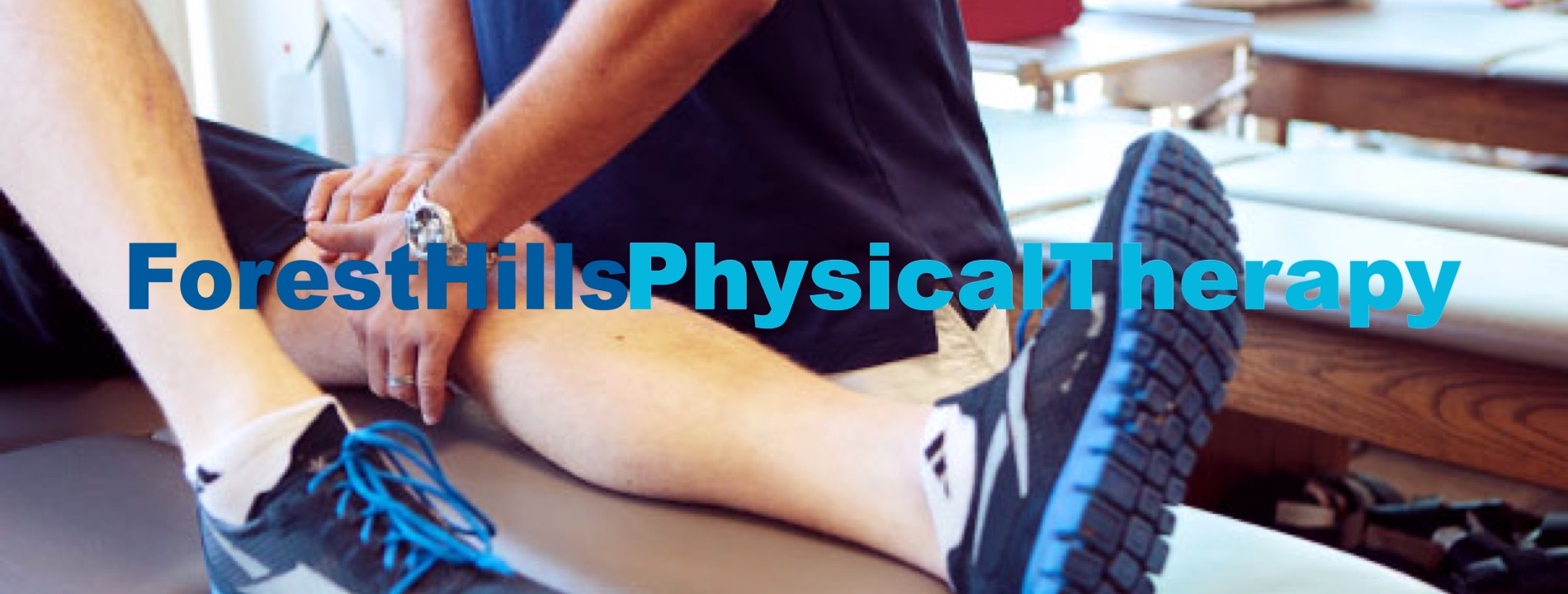http://www.ForestHillsRehab.com - Back pain relief - Tips from our Physical Therapists and Chiropractors in Forest Hills, Queens. Visit our website for more exercise tips to help relieve lower back pain, neck pain or to schedule an appointment. Top-rated physical therapy, chiropractic, sports medicine and pain management.
Blog: Physical Therapy & Chiropractic
Physical Therapy & Chiropractic Forest Hills: Joint Pain
Is Joint Pain Slowing You Down?
Any injury that affects the ligaments, cartilage or bones can contribute to joint pain. Joint pain can affect any part of the body from your neck to your feet. Joint pain is common amongst seniors, but anyone can be affected by it. It can occur all of a sudden, and can be sharp and painful (acute joint pain). On the other hand, it can last longer and can be dull and achy in nature (chronic joint pain). One of the causes of joint pain is bursitis (inflammation of the bursae). The bursae are fluid-filled sacs that cushion and pad bony prominences, allowing muscles and tendons to move freely over the bone.
Arthritis, traumatic injuries, sprains and strains can contribute to joint pain. At times, joint pain may be associated with tingling, numbness, or weakness. Symptoms like these should be reported to a physician as quickly as possible. Joint pain can trigger muscle compensations across your body, which is the body’s way of helping you cope with the joint pain.
Overcoming Joint Pain
In most cases, joint pain can be treated with progressive, supervised exercise which is exactly where your physical therapist can help. Exercising will also help you reduce or maintain your ideal weight, which helps decrease stress on weight-bearing joints like the hip and knee. Walking is the easiest exercise. No special equipment is needed, other than a good pair of walking shoes. Parking further away from your destination will help increase walking distance. Using the stairs instead of the elevator is another way to get some extra exercise.
If you have joint pain, a warm bath and massage can provide some short-term pain relief. Your physician may ask you to get some rest, and seek the advice of a licensed physical therapist.
Gradual, progressive stretching is a good way to reduce joint pain. Please consult a physician or a physical therapist before you start stretching.
Physical Therapy and Joint Pain
Joint pain is an indication that you may need professional help. It may be a result of an undetected condition or an injury.
Your physical therapist will conduct a detailed evaluation to determine the cause of your joint pain. Expect your physical therapist to ask questions to get to the root of the problem. These questions include:
What caused your pain?
Which joint hurts?
Is the pain on one side or both sides?
How long have you had this pain?
What is the nature or type of pain?
Have you injured yourself in any way?
To learn more about how physical therapy can help you deal with joint pain, please call us today and schedule an appointment. We don’t want you to experience any type of pain, and as the experts in joint motion and muscle strengthening, we would like to do everything possible to assist you. Our goal is to help you lead a pain-free lifestyle.
Email : [email protected]
Phone: 718-520-8480
Web: http://www.ForestHillsRehab.com
Physical Therapy & Chiropractic Forest Hills: Core Strengthening
The Real Benefits Of Core Strengthening
No matter what activity you participate in, your “core” is the center of all muscle activity. Your core is much like the middle link to a thick, sturdy chain. The upper part of the chain is your upper body; the bottom part of the chain is your lower body and the two are connected at the center. A stronger core will not only give you a stronger foundation for your upper and lower body, it will also enhance your stability and balance.
Everything you do, whether you know it or not, uses your body’s core. Let’s take a look…
Recreational activities and sports - Every single sport (football, baseball, tennis, golf and even skiing), depends on your body’s core for strength and stability.
Everyday movements - Simple movements like getting in/out of bed or emptying the dishwasher require the use of your core muscles.
Work/job tasks - Any job you perform relies on the core muscles for stability. There are some jobs (especially ones that involve repetitive lifting) that depend on core strength and stability more than others.
Balance and stability - Since your core is truly the “center” of your body and supports your body’s upper and lower extremities and spine, it is used in every single functional task you perform.
A healthy back - Back pain can be excruciating and tends to limit many of your activities. It is estimated that 4 out of 5 people will experience back pain at some point in life. Strengthening the core muscles is the “secret ingredient” to keeping your back healthy.
Gardening and housework - Daily tasks like vacuuming, mopping a floor and making a bed all utilize the strength of your core.
Posture - Having a weak core can lead to poor posture, which in turn contributes to back pain.
You can see from the small list above that the core muscles play a vital role in keeping you strong and injury free.
Strong To The Core
The benefits of a strong core include:
Improved balance and stability for daily activities and recreational activities - core exercises train the muscles of your abdomen, hips, pelvis and lower back.
Increase ease of performance with daily activities - a stronger core can make many things easier and pain free. Examples include swinging a golf club, reaching up to grab a plate in your kitchen cabinet and picking up your child.
Increased confidence - the stronger you are, the more you can do and the more confident you feel.
Pain relief and strength - Relieve lower back pain and prevent future back pain.
Physical Therapy For Your Core
It is not as hard to build core strength and stabilization as you may think. You don’t need any specialized equipment to target the core muscles. All you need is a good physical therapist.
Your physical therapist will be able to not only create an exercise routine specifically for you, but will also be able to monitor your progress. Our staff is highly trained in identifying muscle imbalances and weaknesses. This information is used to craft an individualized program based on your preferences, needs and goals.
Call us today to see how we can make your daily activities easier by facilitating the strength of your core muscles. We look forward to showing you what physical therapy can do for your core.
Forest Hills Rehabilitation - (718) 520-8480
Physical Therapy and Diabetic Neuropathy
Diabetes Getting On Your Nerves?
A majority of people who suffer from diabetes are affected by type 2 diabetes. Diabetes occurs when your body either ignores insulin or your pancreas won’t create enough insulin. This can trigger multiple health problems.
The onset of type 2 diabetes can be delayed, possibly even prevented, with a healthy lifestyle. If left unchecked, diabetes can lead to serious health problems which include kidney failure, heart disease, circulatory problems and nerve damage, just to name a few.
Once diabetes starts affecting the nerves (also known as neuropathy), individuals may experience one or more of these symptoms:
Loss of muscle control and sensation
Numbness, tingling, burning or pain in toes, feet, legs, hands and fingers
Sharp cramps
Extreme sensitivity to touch
Loss of balance or coordination
Losing sensation can be a dangerous situation for some diabetics because small cuts and bruises go undetected, which can trigger infections that can spread to the bone due to a weakened immune system.
In these situations, a physical therapist can help reduce the risk of injury, regain muscle control and improve the quality of life.
Can It Be Treated?
Unfortunately, there is no ‘cure’ for diabetic neuropathy. Most treatments focus on slowing the progression of the neuropathy by controlling blood sugar using lifetyle modification techniques. Physical therapy is crucial since regular exercise plays a big role in the management of diabetic neuropathy.
The management of diabetes requires self-discipline and regular monitoring of one’s glucose levels. In addition to maintaining a healthy weight and controlling blood sugar, it’s important to exercise regularly, control blood pressure (take all your prescribed medication at the right time), quit smoking and minimize alcohol.
If you suspect that you, or a loved one, might have diabetic neuropathy, call our office and we will guide you towards your next step.
Physical Therapy and Diabetic Neuropathy
Your physical therapist plays an important role in controlling your diabetes and the damage it can cause with a structured exercise and injury prevention program.
The process starts with an evaluation to determine the extent of damage to your nervous system. The treatment objective is to retrain your muscles to function the way they are supposed to. This may involve a combination of exercises to challenge your muscles, electrical therapy, positioning techniques and support from your family members.
This makes the physical therapist a critical component of your healthcare team and your biggest ally in the battle against diabetic neuropathy. Be sure to talk to one of our skilled physical therapists to find out what physical therapy can do for you.
Call us for same-day appointment TODAY! 718-520-8480
108-14 72nd Ave, 4th Flr - Forest Hills - NY-11375
Physical Therapy & Chiropractic Forest Hills: Degenerative Disc Disease
Neat video I found on Spine Universe about degenerative disc disease. Our physical therapist and chiropractors treat disc herniation, disc injury, slipped disc, disc bulge and the video really shows what’s happening.
Copy and paste the url: http://webpagevidslarge.s3.amazonaws.com/DiscDisease.m4v
You can also go to our site and click on the “Disc Disease Video” link: http://www.foresthillsrehab.com/Conditions%20Treated/back%20pain/back_pain.html
Physical Therapy and Diabetes: Forest Hills Physical Therapy Post





